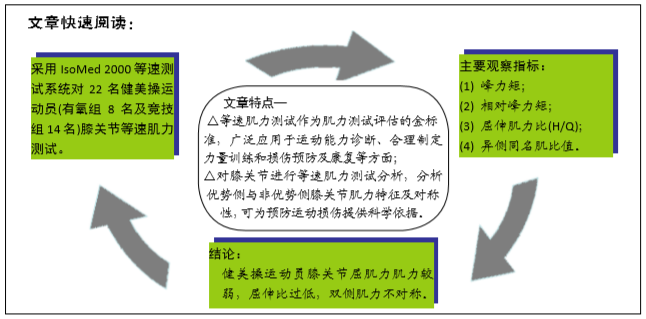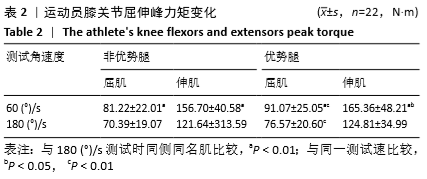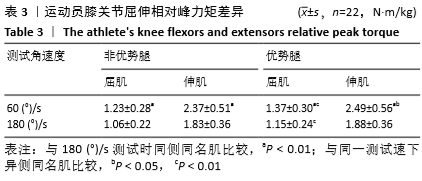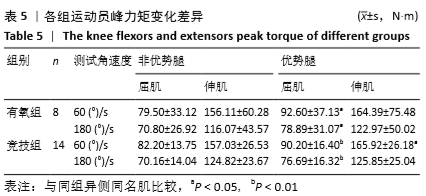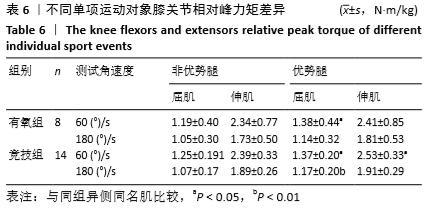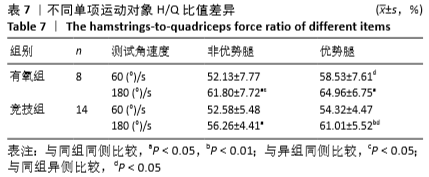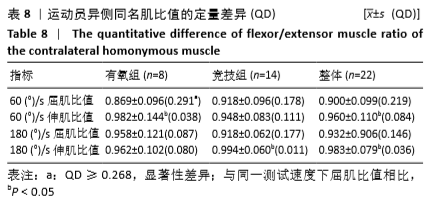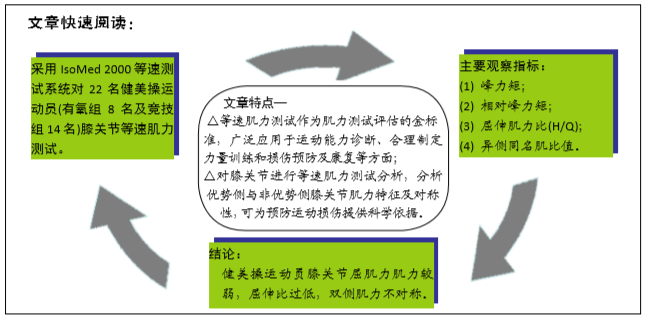[1] 郭庆秋.竞技健美操训练中运动损伤的原因分析[J].中国临床康复, 2004,8(6):1115.
[2] 洪涛.对中国大学生竞技健美操运动员运动损伤的调查与分析[J].北京体育大学学报, 2005,22(4):496-498.
[3] BAHR R, WHITELEY R, TOL JL, et al. Hamstring and quadriceps isokinetic strength deficits are weak risk factors for hamstring strain injuries: a 4-year cohort study. Am J Sports Med. 2016;44(7):1789-1795.
[4] KABACINSKI J, MURAWA M, MACKALA K, et al. Knee strength ratios in competitive female athletes. PLoS One. 2018;(1):e0191077.
[5] 杨涛,李之俊.等速测试在评价运动员肌力中的应用[J].体育科研, 2007,28(3):68-71.
[6] 黄达武,刘露,朱星,等.女性短距离速滑运动员下肢关节等速肌力特征[J].中国组织工程研究,2018, 22(36):5803-5810.
[7] 张静云,王莹莹,王春方,等.基于等速技术的健康成人膝关节屈伸肌肌力的年龄和性别特征的研究[J].中国康复医学杂志,2020, 35(1):54-59.
[8] 唐桥,张海忠.综合性项目运动员动态平衡能力与双侧膝关节肌力、下肢爆发力的相关性研究[J].中国体育科技,2019,55(5):65-71, 80.
[9] 汪洋,王雁,衣龙燕,等.中国优秀男子花剑运动员下肢等速肌力测试分析[J].中国体育科技,2013,49(6):66-69.
[10] 刘承宜,朱玲,李方晖,等.自相似常数和定量差异及其在体育科学中的应用[J].体育学刊, 2017,24(6):72-78.
[11] 张晓莹,刘莉,赵轩立.竞技健美操难度动作C289不同技术特征的运动学分析[J].北京体育大学学报,2017,40(10):99-105.
[12] 刘敏,赵丽锦,罗艳萍.竞技健美操C组难度动作表面肌电特征研究[J].西安体育学院学报, 2019,36(6):735-742.
[13] 赵轩立,张晓莹,刘曦.竞技健美操提臀类与分切类难度动作的运动学对比研究[J].山东体育学院学报,2020,36(1):82-88.
[14] 李旭龙,余锋,张卓,等.竞技健美操中“托马斯”全旋动作的运动生物力学分析[J].成都体育学院学报,2010,36(10):49-52.
[15] 杨宏,郑松波.竞技健美操支撑与水平类动作B146的运动学分析[J].山东体育学院学报, 2011,27(2):75-77.
[16] 张美琪,马鸿韬.竞技健美操难度动作的运动生物力学研究进展[J].中国学校体育(高等教育),2016,3(12):80-84, 88.
[17] 李世明,高金栋.竞技健美操屈体分腿跳成俯撑动作的运动学分析 [J]. 天津体育学院学报,2011,26(1):37-41.
[18] 王颖.中国高水平竞技健美操运动员运动损伤的研究[D].北京:北京体育大学,2014.
[19] BROPHY R, SILVERS H J, GONZALES T, et al. Gender influences: the role of leg dominance in ACL injury among soccer players. Br J Sports Med. 2010;44(10):694-697.
[20] OLSEN OE. Injury mechanisms for anterior cruciate ligament injuries in team handball: a systematic video analysis. Am J Sports Med. 2004; 32(4):1002-1012.
[21] 张丽艳,李光欣.中国优秀男子自由式摔跤运动员膝、踝关节肌力矩峰值的特征[J].体育学刊,2013,20(4):129-133.
[22] 辜伟,程亮.优秀女子武术运动员膝关节等速力量测试研究[J].成都体育学院学报,2013,39(4):77-80.
[23] 苏转平,于芳,曹电康,等.不同速度下优秀男子举重运动员膝关节屈伸肌群等速肌力特征研究[J].沈阳体育学院学报,2018,37(6):1-5.
[24] 岳建军.不同级别竞技健美操运动员髋、膝和踝关节等速肌力特征研究[J].中国体育科技,2014,50(6):59-66.
[25] KONG PW, BURNS SF. Bilateral difference in hamstrings to quadriceps ratio in healthy males and females. Phys Ther Sport. 2010;11(1):12-17.
[26] 罗安民,李珺晖,洪平.中国女子篮球运动员膝关节等速肌力测试分析[J].中国运动医学杂志,2012,31(6):517-522.
[27] CHEUNG RTH, SMITH AW, WONG DP. H: Q ratios and bilateral leg strength in college field and court sports players. J Hum Kinet. 2012; (33):63-71.
[28] RUAS CV, PINTO RS, HAFF GG, et al. Effects of different combinations of concentric and eccentric resistance training programs on traditional and alternative hamstrings-to-quadriceps ratios. Sports. 2019;7(10):1-14.
[29] KELLIS E, GALANIS N, KOFOTOLIS N. Hamstring-to-quadriceps ratio in female athletes with a previous hamstring injury, anterior cruciate ligament reconstruction, and controls. Sports. 2019;7(10):1-10.
[30] 吴升扣,纪仲秋.健美操运动员单次跳跃与连续跳跃能力的生物力学分析[J].体育学刊,2014, 21(3):132-136.
[31] 韩春英,韩甲.竞技健美操直角支撑转体720°的生物力学分析[J].北京体育大学学报, 2007,30(6):863-865.
[32] 刘承宜,胡少娟,李晓云,等.定量差异及其在体育科学中的应用[J].体育学刊,2016,23(1):11-17.
[33] 鞠秀奎.青少年男子体操运动员主要关节的等速肌力特征[J].中国组织工程研究,2016, 20(46):6922-6929.
[34] 石新燕.不同等级散打运动员肘、膝关节肌群等速测试肌力特征研究[J].天津体育学院学报,2012,27(2):168-172.
[35] 杨建琴,冯瑞. FIG有氧踏板成套动作分析与研究-以2016亚洲体操节为例[J].体育科技文献通报,2018,26(7):165-167.
[36] 石金龙.第十三届世界健美操锦标赛有氧踏板动作要素分析[J].四川体育科学,2016,35(4):78-82.
|
